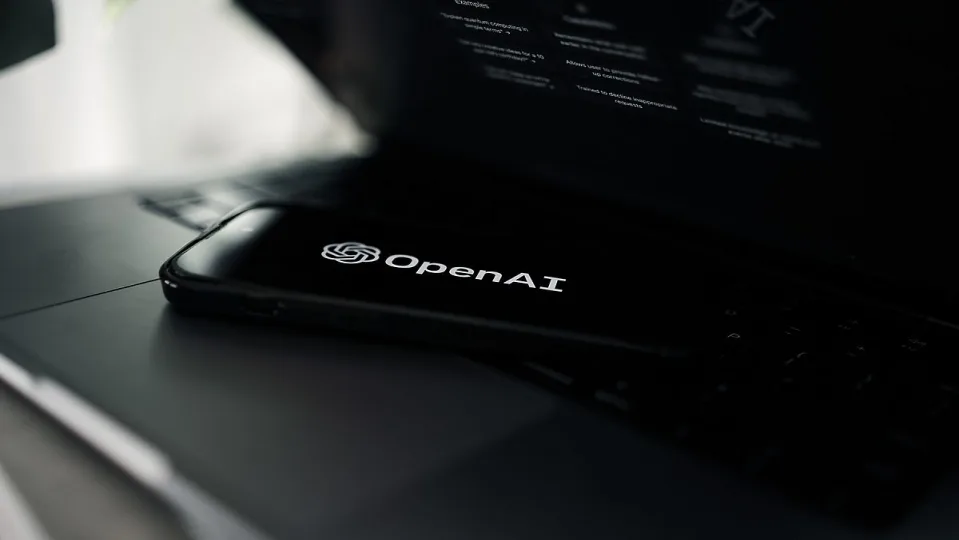Imagine a world where artificial intelligence is not just a tool but an intuitive companion, where screens fade into the background, and the way we interact with computers is transformed into something extraordinary. This is the audacious vision that Apple’s former VP of Industrial Design, Jony Ive, and the groundbreaking AI powerhouse, OpenAI, have set out to realize—a quest described as creating the “iPhone of artificial intelligence.”
With a billion-dollar backing from Softbank’s CEO, Masayoshi Son, this project is poised to redefine the very fabric of our digital existence.
“iPhone of artificial intelligence” already got $1 billion in funding
At its core, Ive and OpenAI’s project seeks to provide users with a more intuitive and natural way of interacting with artificial intelligence. The reported $1 billion investment from Softbank CEO Masayoshi Son indicates the seriousness of the project, which is still in the planning phases.
While ChatGPT has demonstrated its capabilities on laptops and iPhones, these devices were not explicitly designed with AI interaction in mind. The collaboration’s ultimate goal is to create a paradigm shift where we rely less on traditional screens to engage with computers.
The “iPhone of artificial intelligence” is a concept that envisions creating an AI product or platform with the same transformative impact that the iPhone had on smartphones. It aims to make AI incredibly intuitive, seamlessly integrated into our daily lives, and a game-changer in how we interact with technology. This concept calls for innovative design, a user-friendly experience, a robust ecosystem, and the potential to revolutionize AI interaction, much like the iPhone did for mobile phones. It represents the aspiration to make AI an indispensable, accessible, and transformative part of our digital existence.

The Financial Times, citing individuals familiar with the project, hinted at the possibility of “a way of interacting with computers that is less reliant on screens.”
Moreover, the generous backing from Softbank’s Masayoshi Son underscores the seriousness and scale of this project. With the resources and vision at their disposal, Ive and OpenAI have the means to reshape how we interact with technology.
What does the “iPhone of artificial intelligence” mean?
The term “iPhone of artificial intelligence” is an intriguing concept that captures the idea of creating a revolutionary product or platform in the field of AI that could have a transformative impact on how we interact with and perceive artificial intelligence.

To understand this concept fully, let’s break it down:
- iPhone as a benchmark: The reference to the “iPhone” is not meant to suggest that the AI product would physically resemble an iPhone but rather draws parallels to the iPhone’s impact on the smartphone industry. When the iPhone was introduced in 2007, it redefined the smartphone market by offering a user-friendly interface, innovative design, and a seamless ecosystem of apps and services. It set new standards for what a smartphone could be. Therefore, the “iPhone of AI” implies creating an AI product or platform that similarly redefines and elevates the way we interact with AI.
- Artificial Intelligence (AI): AI refers to the simulation of human intelligence in machines, enabling them to perform tasks that typically require human intelligence, such as understanding natural language, recognizing patterns, making decisions, and solving complex problems. AI has become increasingly integrated into our daily lives, from virtual assistants like Siri and Google Assistant to recommendation algorithms on streaming platforms and e-commerce websites.
- Creating the iPhone of AI: To create the “iPhone of AI,” the goal is to develop a groundbreaking AI solution that offers several key characteristics:
- Intuitiveness: The AI should be incredibly easy to use, requiring minimal effort to interact with and understand. Much like how the iPhone’s touch interface made smartphones accessible to a wide audience, the “iPhone of AI” should offer an intuitive and user-friendly experience.
- Seamless integration: Just as the iPhone seamlessly integrates hardware and software, the “iPhone of AI” should seamlessly integrate AI into our daily lives. This means it should be able to effortlessly interact with other devices and services, making AI ubiquitous and enhancing its utility.
- Innovative design: Similar to the iPhone’s sleek design and innovative features, the “iPhone of AI” should introduce novel concepts and approaches to AI interaction. It might involve new ways of input (e.g., gesture recognition or natural language understanding) or novel hardware interfaces.
- Ecosystem: Like Apple’s ecosystem of apps and services, the “iPhone of AI” could be part of a larger ecosystem, offering a wide range of applications and services built on the AI platform.
- Transformativeness: Ultimately, the “iPhone of AI” should transform the way we perceive and utilize artificial intelligence. It should not merely be a tool but a companion that enhances our daily lives, making AI a seamless and integral part of our existence.
In essence, the “iPhone of artificial intelligence” represents a visionary goal of creating an AI product or platform that revolutionizes AI interaction, making it as accessible, integrated, and transformative as the iPhone did for smartphones.
While such a concept is still evolving and in the early stages of development, it represents the boundless potential of AI to reshape our future in ways we can only begin to imagine.


